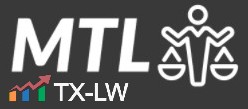The IRS relies on voluntary compliance from taxpayers, meaning that most people follow tax laws willingly. However, noncompliance can result in penalties, making it an incentive for individuals to comply.
To help identify potentially taxable transactions, third parties are required to file information reporting forms with the IRS. For instance, real estate sales typically require brokers to file a Form 1099-S. While penalties can be imposed on brokers for not filing these forms, they may not always be necessary, especially in cases where there is no taxable gain.
The new Revenue Procedure 2007-12 addresses some questions brokers have had about filing Forms 1099-S in such instances.
Contents
The Reporting Requirements
Section 6045(e) and § 1.6045-4 of the regulations require a real estate reporting person to file an information return and furnish a statement to the seller when a real estate transaction occurs. This return and statement must include certain information such as the name, address, and taxpayer identification number of the seller, and the gross proceeds of the transaction. This is reported on Form 1099-S, Proceeds From Real Estate Transactions.
However, a sale or exchange of a principal residence is excepted from this reporting requirement if the seller provides a certification to the real estate reporting person. This certification must include certain assurances, including that the residence is the seller’s principal residence and that the full amount of the gain on the sale or exchange is excludable from gross income under Section 121.
About the Section 121 Exclusion
Section 121 provides rules for the exclusion of gain on certain sales or exchanges of a principal residence. A taxpayer may exclude up to $250,000 of gain on the sale or exchange of a principal residence if certain conditions are met. In some cases, a married couple filing a joint return may exclude up to $500,000 of gain. This is one of the primary tax planning opportunities for the sale of residences.
Section 840 of the AJCA, as amended by the GO Zone Act, added a provision that the exclusion for gain on the sale or exchange of a principal residence does not apply if the taxpayer acquired the principal residence in a like-kind exchange in which any gain was not recognized under Section 1031(a) or (b) within the prior five years.
Real Estate Broker Assurances
This brings us to Revenue Procedure 2007-12. This revenue procedure clarifies what “assurances” real estate brokers must obtain from persons who sell their principal residence to avoid having to file information returns for those who qualify under Section 121.
As noted above, real estate brokers are generally required to provide a Form 1099-S to a person selling or exchanging real estate. This form helps the IRS track the seller’s proceeds from the sale, to ensure that the seller reports that taxable income on their federal income tax return. Failure to file this form can subject the broker to tax penalties for failure to file a return or for failure to furnish a payee statement to the seller under Sections 6721 and 6722.
The revenue procedure clarifies that brokers are not required to file and are not subject to these penalties if the broker “receives written assurance in a form acceptable to the Secretary from the seller” that the sales proceeds are excluded from the seller’s taxable income pursuant to Section 121. The IRS has spelled out what constitutes “written assurance in a form acceptable to the Secretary.”
What Assurances Must Be Obtained?
The revenue procedure says that brokers must obtain the following assurances from the parties:
- The seller owned and used the residence as the seller’s principal residence for periods aggregating 2 years or more during the 5-year period ending on the date of the sale or exchange of the residence.
- The seller has not sold or exchanged another principal residence during the 2-year period ending on the date of the sale or exchange of the residence.
- No portion of the residence has been used for business or rental purposes after May 6, 1997, by the seller (or by the seller’s spouse or former spouse, if the seller was married at any time after May 6, 1997).
- At least one of the following three statements applies:
- The sale or exchange is of the entire residence for $250,000 or less OR
- The seller is married, the sale or exchange is of the entire residence for $500,000 or less, and the gain on the sale or exchange of the entire residence is $250,000 or less OR
- The seller is married, the sale or exchange is of the entire residence for $500,000 or less, and (a) the seller intends to file a joint return for the year of the sale or exchange, (b) the seller’s spouse also used the residence as his or her principal residence for periods aggregating 2 years or more during the 5-year period ending on the date of the sale or exchange of the residence, and (c) the seller’s spouse also has not sold or exchanged another principal residence during the 2-year period ending on the date of the sale or exchange of the residence.
- During the 5-year period ending on the date of the sale or exchange of the residence, the seller did not acquire the residence in an exchange to which section 1031 applied.
- In cases where the seller’s basis in the residence is determined by reference to the basis in the hands of a person who acquired the residence in an exchange to which section 1031 applied, the exchange to which section 1031 applied occurred more than 5 years prior to the date of the seller’s sale or exchange of the residence.
The main difference between this revenue procedure and the prior procedure is, as mentioned above, that it accounts for Section 1031 exchange transactions.
Revenue Procedure 2007-12 also provides a sample form that brokers may use to capture these assurances.
Brokers must make sure to document these assurances for sales and exchanges of principal residences occurring after January 22, 2007.
The Takeaway
This revenue procedure provides clarity on the reporting requirements for real estate brokers when it comes to selling or exchanging a principal residence. Section 6045(e) and § 1.6045-4 of the Income Tax Regulations require brokers to file an information return and furnish a statement to the seller, but this requirement is excepted if the seller provides certain assurances. Section 121 provides rules for the exclusion of gain on certain sales or exchanges of a principal residence, and the revenue procedure clarifies the assurances brokers must obtain from the seller to avoid penalties for failure to file a Form 1099-S. Brokers must ensure that they capture and document these assurances, especially in cases involving Section 1031 exchanges.
In 40 minutes, we'll teach you how to survive an IRS audit.
We'll explain how the IRS conducts audits and how to manage and close the audit.


